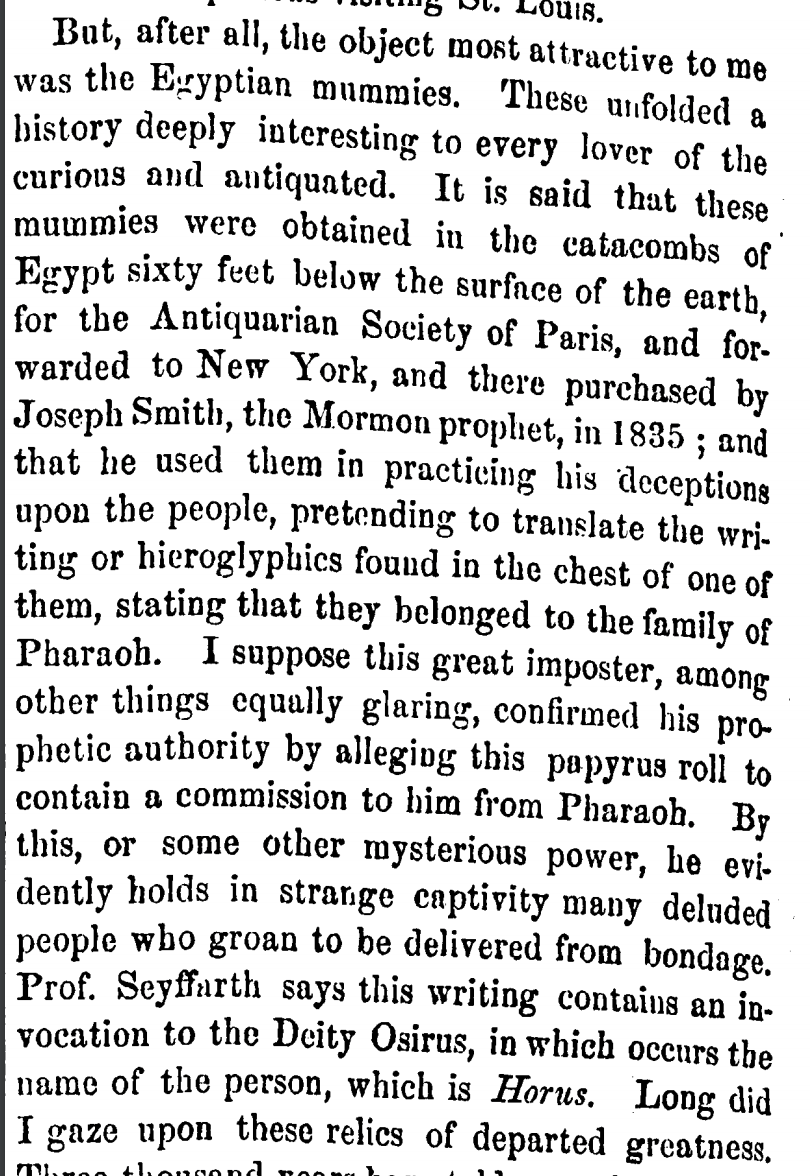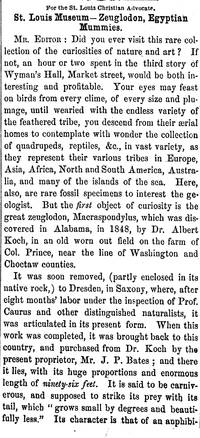GS describes Facsimile 3 as containing an invocation to Osiris, mentions the name of owner, Horus, is in the scene.
- Type
- News (traditional)
- Source
- "W. M. L." CriticNon-LDS
- Hearsay
- 2nd Hand
- Reference
W. M. L., "St. Louis Museum—Zeuglodon, Egyptian Mummies," St. Louis Christian Advocate 7, no. 4 (September 10, 1857): [2]
- Scribe/Publisher
- St. Louis Christian Advocate
- Audience
- Reading Public
- Transcription
. . . But, after all, the objects most attractive to me was the Egyptian mummies. These unfolded a history deeply interesting to every lover of the curious and antiquated. It is said that these mummies were obtained in the catacombs of Egypt sixty feet below the surface of the earth, for the Antiquarian Society of Paris, and forwarded to New York, and there purchased by Joseph Smith, the Mormon prophet, in 1835; and that he used them in practicing his deceptions upon the people, pretending to translate the writings or hieroglyphics found in the chest of one of them, stating that they belonged to the family of Pharaoh. I suppose this great imposter, among other things equally glaring, confirmed his prophetic authority by alleging this papyrus roll to contain a commission to him from Pharaoh. By his, or some other mysterious power, he evidently holds in strange captivity many deluded people who groan to be delivered from bondage. Prof. Seyffarth says this writing contains an invocation to the Deity Osirus, in which occurs the name of the person, which is Horus. Long did I gaze upon these relics of departed greatness.
- Citations in Mormonr Qnas
The B. H. Roberts Foundation is not owned by, operated by, or affiliated with the Church of Jesus Christ of Latter-day Saints.


